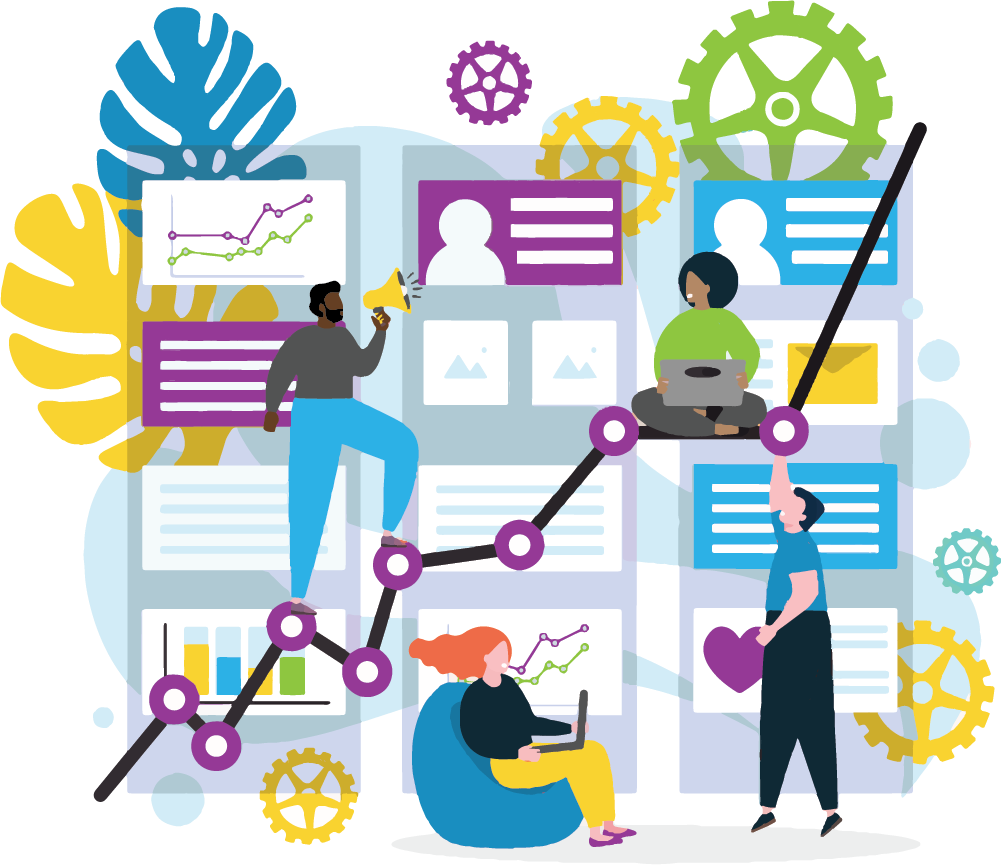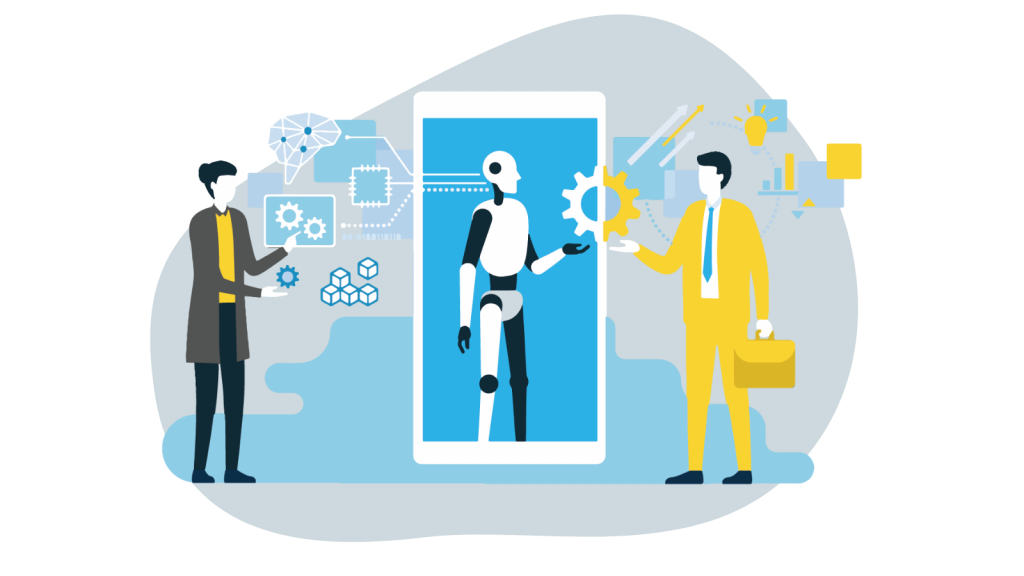This article, authored by BlastPoint CEO and Cofounder Alison Alvarez, first appeared here as part of Energy Central’s October 2020 Special Issue: Advances in Utility Digitalization.
Customer engagement is a top priority for utilities this year, given the pandemic and current economic conditions. With so many people facing hardship, utilities have embraced new technologies like artificial intelligence to support their crisis management efforts.
With the help of A.I., we are seeing utilities weather COVID-19 by:
- reaching customers in crisis quickly and effectively,
- enrolling customers into programs that keep them out of delinquency and avoid shut-offs,
- recouping lost revenue,
- generating new streams of cash flow,
- staying relevant despite shifting customer needs, and
- remaining competitive against other available power sources.
Accomplishing these objectives begins with deploying A.I. to manage a few basics with regard to customer data, such as 1) organizing it, 2) standardizing it and 3) ensuring it stays in compliance with privacy laws. Meeting these three criteria helps utilities get the most out of their customer data while protecting them from crises long into the future. Here’s how.
Orchestrating Siloed Customer Data
Marketing, sales, customer service, billing, road crews and others gather and use data in different ways and for various purposes. These teams are often siloed, however, so the data they have is kept separate from other teams’ data. One team’s bucket of information is, therefore, not always accessible to another’s, even if it would be helpful to them. Disjointed data creates missed opportunities and makes it harder for utilities to build cost-generating or cost-saving programs.
But today’s digital customer intelligence platforms make it easy for utility teams to pour their separate data buckets into one big “data lake,” so that it’s combined, coalesced and accessible to everyone who needs it, regardless of the goal they’re working toward.
With combined, orchestrated data, utilities can, for example, quickly identify and enroll at-risk customers into payment plans or assistance programs during an economic crisis, which keeps much-needed revenue coming in.

Data that’s coalesced allows utilities to sign more customers up for programs like paperless billing, which cuts down on postage and saves trees. We have seen our energy partners achieve major savings by expanding their e-billing programs and make major strides toward hitting their zero-carbon goals.
Putting data together that was once kept separate helps utilities that are looking to build new pipelines or expand into different territories, too. Using A.I.-powered data means it takes less time and money to explore geographic regions for feasibility.
We also see energy providers selling more energy efficiency hardware and smart appliances once they’ve organized and orchestrated their customer data. Prioritizing, scoring and filtering customer data sets through A.I., for example, makes it quick, easy and cost-efficient to find the right customers to fulfill these goals.
With orchestrated data, utilities are better equipped to:
- Understand their customers at the household level,
- Segment customers effectively for completing initiatives,
- Align sales and marketing teams;
- Make sense of customer records temporally, through taking snapshots of data at different points in time,
- Understand shifts in things like payment behavior and digital engagement response,
- Spot patterns that occur among similar customers,
- Serve customers in the ways that are most relevant to them, and
- Make informed business decisions.
Standardizing Data for Long-Term Survival
In an ideal world, every organization would follow best practices in customer data management. But doing so is not easy without having a robust digital platform to contain it and a savvy Chief Data Officer to ensure data is collected, recorded and updated in a uniform way across departments.
Data quality is difficult to maintain, especially for large organizations like utilities that cover huge swaths of territory, use extremely different types of data to keep the business operating, and experience high staff turnover.

We’ve seen some teams scramble in a panic when one employee retires, for example, because that person kept a career’s worth of information in her own head instead of in a shareable file, leaving the rest of the team wondering how they could possibly proceed without her.
With large volumes of data like billing records, outreach attempts, address changes and service outages moving into and out of utilities every day, having a digitized system in place establishes standards that prevent the scenario above.
A.I. platforms help utilities implement these uniform rules and lets them build customer intelligence into their own systems. This kind of technology formats data in a consistent manner as it gets gathered, recorded and stored so that it can be easily analyzed and understood by future teams (no matter who retires).
Overlooking the step of standardizing data can cause delays in crisis management, whether the disaster at hand is economic or caused by nature. But when data is uniform, up-to-date and usable across teams, swift intervention to reach customers becomes easy. During a crisis, utilities can immediately focus on delivering the right kinds of solutions that protect their customers, rather than spend time figuring out who to help, how to reach them and what they might even need first. With an A.I.-enabled platform, all of that information is readily available.
Ensuring Compliance with Privacy Regulations
Data privacy is everything, especially during a crisis. With reports of data breaches, fraud and identity theft, customers are more skeptical than ever about how companies gather and use their information. Combine mistrust with public anxiety over a situation like the coronavirus, along with the growing array of options for how people can get heat and light into their homes, and what we’re seeing is that customers don’t hesitate to turn to a competitor if they feel their privacy is not being safeguarded.
Throughout the pandemic, data privacy has been under scrutiny, as more people are online more of the time, and more services have had to go digital. Companies across sectors have had to update their data privacy procedures, often after it was too late, where a breach or hack already took place.
Hacks happen, but they are far less likely when utilities have put A.I. in charge. A.I. mitigates risks by standardizing data first, which establishes a baseline, and then detecting anomalies as they arise, as in the case of malware accessing stored email addresses.

GDPR (general data protection regulations) was instituted in 2018 across Europe, requiring that companies make it clear to customers what kinds of data is collected on them and how it gets used. The U.S. does not currently have a federal consumer data protection law, but some states have crafted their own.
The California Consumer Privacy Act functions in much the same way as GDPR, and its goal is to protect consumer privacy and create more transparency. Nevada and Maine have similar laws in effect, with Massachusetts, New York and Maryland working laws through their legislatures toward achieving tighter data privacy regulations.
Utilities that operate outside of these regions may not have to honor new and developing data privacy policies yet, but they should do so anyway, as compliance is critical to crisis-proofing the future. Some organizations have been fined for unwittingly not complying with data laws, so it behooves utilities to update their procedures to ensure they don’t fall prey to fines or public distrust.
Compliance with these laws doesn’t have to be daunting, though. A.I. platforms exist to make honoring the most stringent policies easy, automated and fool-proof.
Coalescing data, maintaining quality control of it and complying with data privacy laws are essential for utilities that want to crisis-proof themselves and their customers for the future. We see utilities endeavoring in these processes now, and they are thriving, experiencing real victories in customer satisfaction and revenue generation, despite the pandemic and economic downturn. Having embraced A.I., they are in a more secure position to take on the future, get proactive and stay relevant no matter what challenges arise.
Ready to get started implementing A.I. solutions? Visit our Solutions page and drop us a line.

